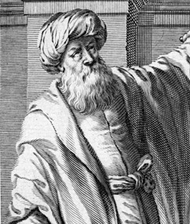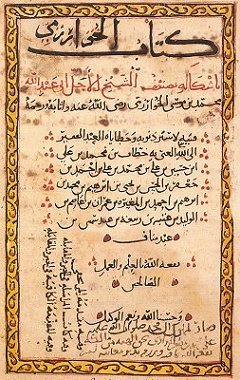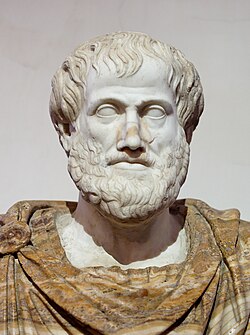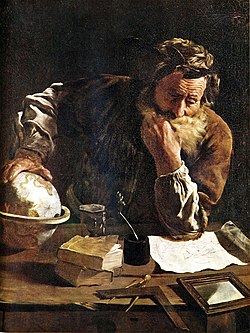Islamic world

In the 7th to 15th centuries, scientific progress occurred in the Muslim world. Many classic works in Indian, Assyrian, Sassanian (Persian) and Greek, including the works of Aristotle, were translated into Arabic.[9] Important contributions were made by Ibn al-Haytham (965–1040), an Arab[10] or Persian[11] scientist, considered to be a founder of modern optics. Ptolemy and Aristotle theorised that light either shone from the eye to illuminate objects or that "forms" emanated from objects themselves, whereas al-Haytham (known by the Latin name "Alhazen") suggested that light travels to the eye in rays from different points on an object. The works of Ibn al-Haytham and al-Biruni (973–1050), a Persian scientist, eventually passed on to Western Europe where they were studied by scholars such as Roger Bacon and Vitello.[12]
Ibn al-Haytham used controlled experiments in his work on optics, although to what extent it differed from Ptolemy is debated.[13][14] Arabic mechanics like Bīrūnī and Al-Khazini developed sophisticated "science of weight", carrying out measurements of specific weights and volumes.[15]
Ibn Sīnā (980–1037), known as "Avicenna", was a polymath from Bukhara (in present-day Uzbekistan) responsible for important contributions to physics, optics, philosophy and medicine. He published his theory of motion in Book of Healing (1020), where he argued that an impetus is imparted to a projectile by the thrower. He viewed it as persistent, requiring external forces such as air resistance to dissipate it.[16][17][18] Ibn Sina made a distinction between 'force' and 'inclination' (called "mayl"), and argued that an object gained mayl when the object is in opposition to its natural motion. He concluded that continuation of motion is attributed to the inclination that is transferred to the object, and that object will be in motion until the mayl is spent. This conception of motion is consistent with Newton's first law of motion, inertia, which states that an object in motion will stay in motion unless it is acted on by an external force.[16] This idea which dissented from the Aristotelian view was later described as "impetus" by John Buridan, who was likely influenced by Ibn Sina's Book of Healing.[19]

Hibat Allah Abu'l-Barakat al-Baghdaadi (c. 1080 – c. 1165) adopted and modified Ibn Sina's theory on projectile motion. In his Kitab al-Mu'tabar, Abu'l-Barakat stated that the mover imparts a violent inclination (mayl qasri) on the moved and that this diminishes as the moving object distances itself from the mover.[20] He also proposed an explanation of the acceleration of falling bodies by the accumulation of successive increments of power with successive increments of velocity.[21] According to Shlomo Pines, al-Baghdaadi's theory of motion was "the oldest negation of Aristotle's fundamental dynamic law [namely, that a constant force produces a uniform motion], [and is thus an] anticipation in a vague fashion of the fundamental law of classical mechanics [namely, that a force applied continuously produces acceleration]."[22] Jean Buridan and Albert of Saxony later referred to Abu'l-Barakat in explaining that the acceleration of a falling body is a result of its increasing impetus.[20]
Ibn Bajjah (c. 1085–1138), known as "Avempace" in Europe, proposed that for every force there is always a reaction force. Ibn Bajjah was a critic of Ptolemy and he worked on creating a new theory of velocity to replace the one theorized by Aristotle. Two future philosophers supported the theories Avempace created, known as Avempacean dynamics. These philosophers were Thomas Aquinas, a Catholic priest, and John Duns Scotus.[23] Galileo went on to adopt Avempace's formula "that the velocity of a given object is the difference of the motive power of that object and the resistance of the medium of motion".[23]
Nasir al-Din al-Tusi (1201–1274), a Persian astronomer and mathematician who died in Baghdad, introduced the Tusi couple. Copernicus later drew heavily on the work of al-Din al-Tusi and his students, but without acknowledgment

